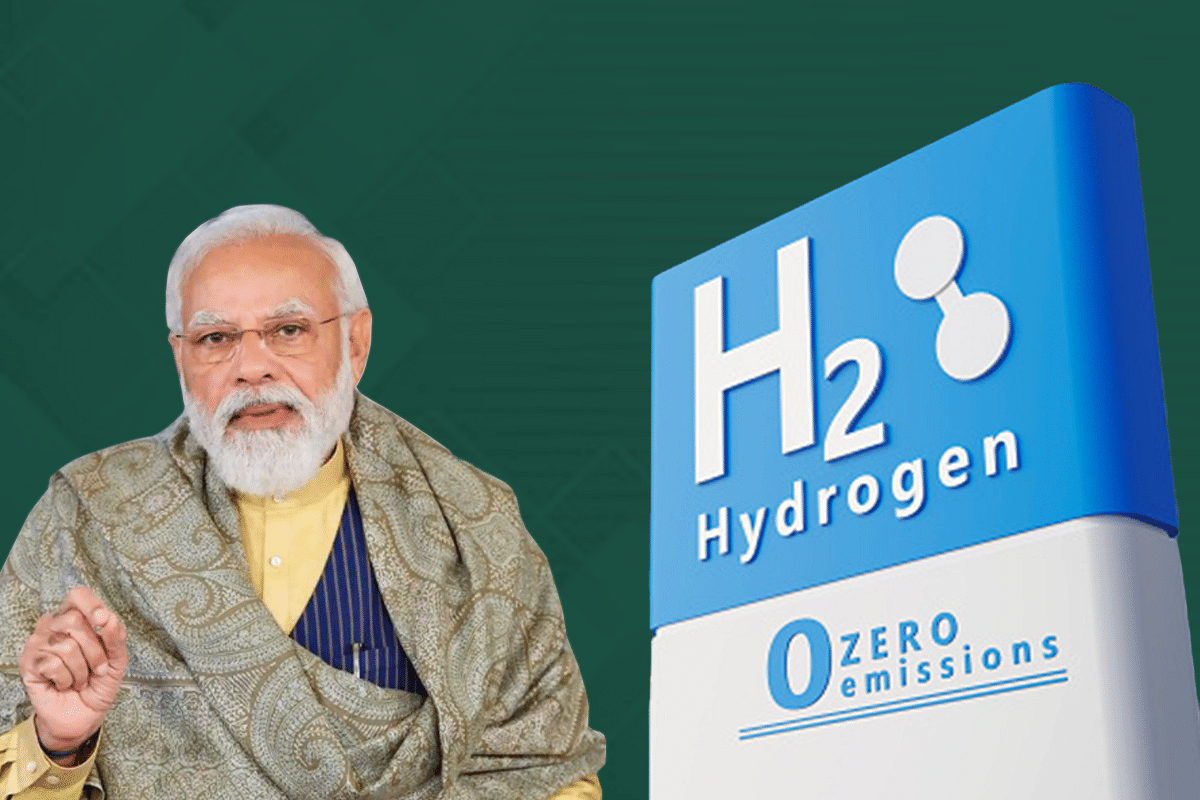Infrastructure
Modi Govt’s Green Hydrogen Mission To Attract Rs 8 Lakh Crore Investments And Create 6 Lakh Jobs
- National Green Hydrogen Mission approved by the Union Cabinet would abate nearly five crore Metric Tonne of greenhouse gas emissions every year.
- This Rs 19,744 crore mission estimates to attract over Rs eight lakh crore investments and create six lakh jobs by 2030.
- Analysts believe transitioning to Green Hydrogen is one of the major requirements to make India a net exporter of fuel from the current status of leading importer of fuel.

National Green Hydrogen Mission (NGHM) (Representative Image)
The National Green Hydrogen Mission approved by the Union Cabinet on Wednesday (4 January) estimates to attract over Rs eight lakh crore investments and create six lakh jobs by 2030.
Besides boosting the economy with investments and jobs, this national mission is set to reduce greenhouse gas emissions in a large way.
It is estimated that nearly five crore MT (Metric Tonne) of greenhouse gas emissions would be abated each year.
The initial outlay for the mission will be Rs 19,744 crore, including an outlay of Rs 17,490 crore for the SIGHT (Strategic Interventions for Green Hydrogen Transition) programme, Rs 1,466 crore for pilot projects, Rs 400 crore for R&D, and Rs 388 crore towards other mission components.
If implemented according to the plan, this mission creates a green hydrogen production capacity of at least five MMT (Million Metric Tonne) per annum and adds a renewable energy capacity of about 125 GW (one GW equals 1,000 MW) in India.
It is estimated that the Green Hydrogen Mission also leads to cumulative reduction in fossil fuel imports over Rs one lakh crore.
On a whole, exporting Green Hydrogen and its derivatives; decarbonisation of industrial, mobility and energy sectors; reduction in dependence on imported fossil fuels and feedstock; development of indigenous manufacturing capabilities and development of cutting-edge technologies are some benefits India may accrue from this large mission undertaken by the Modi government.
Green Hydrogen - Fuel of the future?
Hydrogen, like electricity, is an energy carrier that must be produced from another substance. Hydrogen can be produced from a variety of sources including water, fossil fuels, or biomass and used as a source of energy or fuel.
Hydrogen has the highest energy content of any common fuel by weight (about three times more than gasoline), but it has the lowest energy content by volume (about four times less than gasoline).
Hydrogen and Ammonia are envisaged to be the future of fuels and are envisaged to replace fossil fuels in the years to come.
Depending on the nature of the method of its extraction, hydrogen is categorised into three categories, namely, grey, blue and green.
There is a growing focus on increasing production of green and blue hydrogen due to its no carbon emission and use of carbon offset technology, respectively.
The cleanest one of all is ‘green’ hydrogen, which is generated by renewable energy sources without producing carbon emissions in the first place.
Analysts believe transitioning to Green Hydrogen and Green Ammonia is one of the major requirements for reduction of emissions and to make India a net exporter of fuel from the current status of leading importer of fuel.
Introducing ElectionsHQ + 50 Ground Reports Project
The 2024 elections might seem easy to guess, but there are some important questions that shouldn't be missed.
Do freebies still sway voters? Do people prioritise infrastructure when voting? How will Punjab vote?
The answers to these questions provide great insights into where we, as a country, are headed in the years to come.
Swarajya is starting a project with an aim to do 50 solid ground stories and a smart commentary service on WhatsApp, a one-of-a-kind. We'd love your support during this election season.
Click below to contribute.
Latest